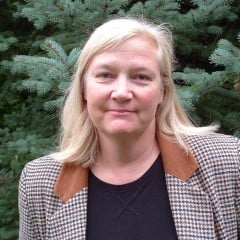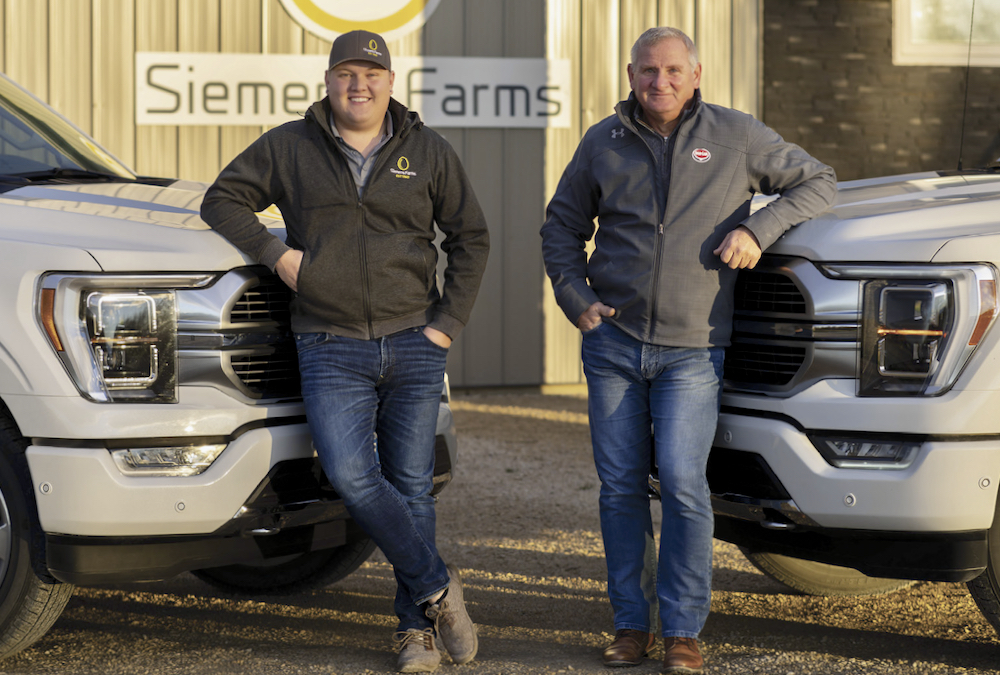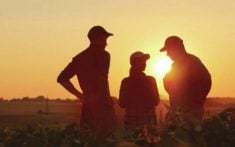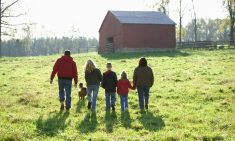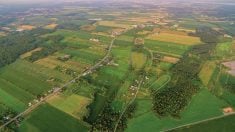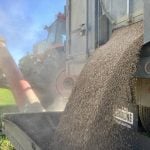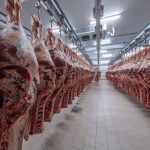When Kurt Siemens and his son Harley were planning an expansion of the family’s egg farm, they would scratch out designs on paper, then climb the feed tank in the yard so they could visualize the layout on the ground from a bird’s-eye view.
“We would take marker paint and draw the building out on the ground, then go up on the top of the tank and take pictures. We would say, this is where the eggs go, and this is where the supplies go, this is where the packer goes, this is where the bathroom is,” Kurt says. “All those types of things, you have to visualize.”
At the same time, though, they were also laying out the blueprint for how their farm would meet the future, because they had decided they would learn to meet it as a team, building on their combined strengths.
Read Also
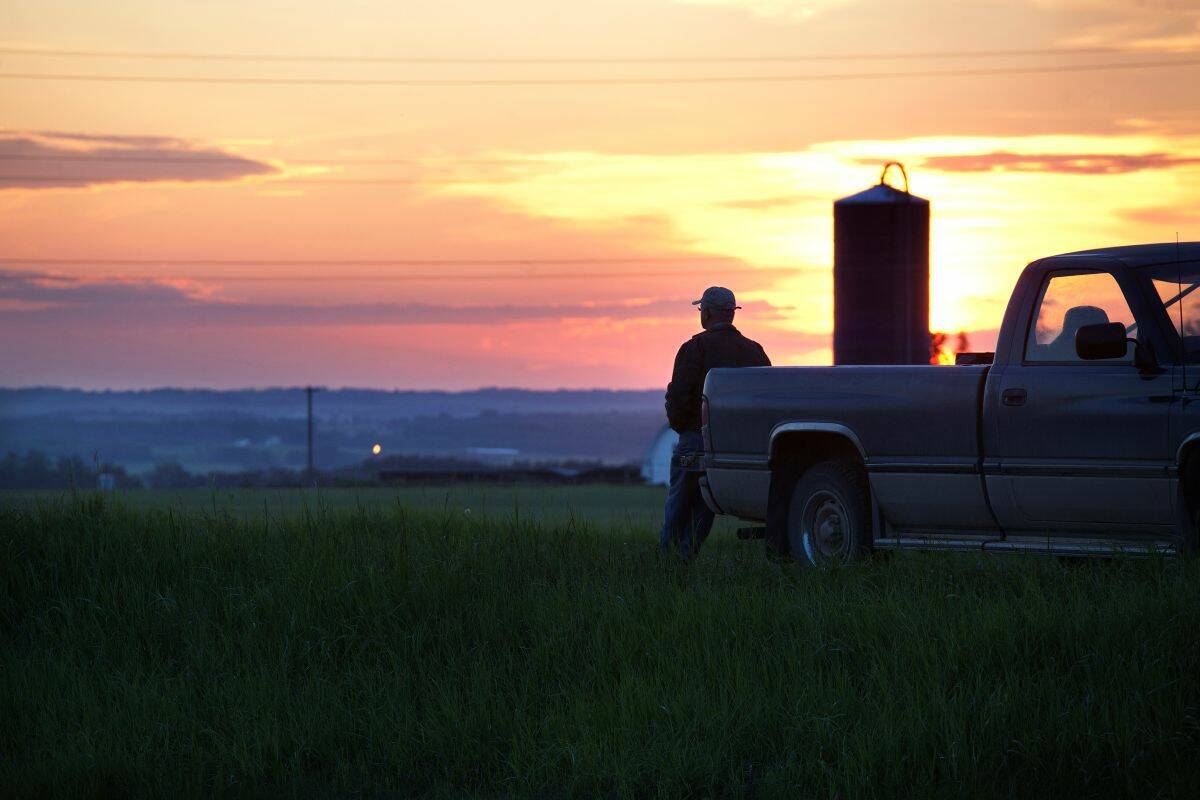
It doesn’t have to be the end for your farm
Options for farmers without successors to pass on the farm.
A lot of family farm businesses today face the forces that led the Siemenses to the top of that tank for that bird’s-eye view. The reality is that if a new generation comes back to most farms, change has to come with it.
Succession turns the focus to some kind of expansion, which leads to a transition in much more than ownership.
For the Siemenses, it also meant the hundred little decisions they made along the way — things like joining a farm organization, or making a point of touring new barns that get built — helped make the big decisions a ton more realistic.
And sometimes, as in the case of the Siemens family, it all happens in ways that weren’t exactly expected.
Near Rosenort, Man., an hour south of Winnipeg, Siemens Farms is a 19,000-pullet and 24,000-layer operation. It’s a family farm, and as on a lot of family farms, although son Harley grew up helping out on the farm and could basically run the barn by the age of 10, he and Kurt hadn’t formally discussed whether he would commit permanently to the farm.
But it didn’t mean they were sleepwalking their way into the future. In fact, it was far from it.
“We didn’t have one specific chat where we sat down and said, you’re coming back to the farm. It’s been a progression over time to find out, is it going to work, is that what you really want to do, do I really want to work with you for the rest of my life?” Kurt says. “Those are not easy, simple questions, and although you wish as parents that one of your kids will take over, it’s not an absolute must.”
A time for decisions
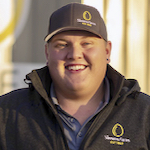
Then the whirlwind started. Harley graduated from the University of Manitoba in 2016 with an agricultural diploma in livestock management. A week later he got married to wife Brooklyn and soon after made the decision that he definitely wanted to be a part of the family farm full-time.
At that point, the Siemenses had to start looking at how they were going to adapt the farm so that it could support two families, as well as Harley’s brother-in-law, Mitchell, who is the farm’s other employee. That led them to decide they would do a $3.5 million expansion of the operation and build three new, state-of-the-art barns.
Besides the need to grow the business, another big influence on their decision about the direction they would go came from Kurt’s long involvement in the egg industry, serving on the board of Manitoba Egg Farmers, Egg Farmers of Canada and attending conferences with the International Egg Commission.
“Having that exposure at a local, national and global level, I could see what was happening around the world, what the trends were, and what the future might look like for the industry,” Kurt says.
As an example, he knew that regulations were coming that would soon require all conventional type housing in barns to be remodelled. The Siemenses had already begun to switch their conventional housing to furnished housing, but decided if they were going to make a big change, they might as well take a look at going to aviary free-run barns, of which there were only a handful in Western Canada at the time.
Is this going to work?
They began doing their due diligence, talking to a number of other Canadian egg producers they knew well who already had free-run systems, and sent Harley and Mitchell to a trade show in Ontario where they got a better look at the technology and toured some barns using it. Although they came back hugely enthusiastic for the free-run system, Kurt still needed to be convinced.
In another sign of the times, it was Harley who got the job of running the budgets. Like many of his generation, he’s a numbers guy, and he immediately went to work with spreadsheets to see if the plan could be feasible.
“I talked to a lot of free-run farmers across Canada to see what’s the liveability of the bird? Do they have the same feed conversion ratios? What’s your production rate? I ask a lot of these intertwined questions, then I’d ask what is your approximate premium for those eggs,” Harley says. “I built a spreadsheet and figured out how much money we would make, and did a projection for a couple of years that helped me see that this was going to be worth it, and be feasible on our farm.”
It’s Kurt and Harley’s typical approach when it comes to making any major decisions on the farm, and the expansion definitely ranks as the biggest to date. Armed with as much information as possible, they sit down and discuss any new project, coming at it with their own perspectives and priorities, and making sure it is judged by some key questions.
“At this point I am taking care of all the bookkeeping, so my gauge tends to lead more to the financial side,” Kurt says. “What is our debt load and how much more can we comfortably take on? What is our return on investment and how long will it take to see that return? The direction we take has to meet with our outlook in life, so will the project maintain us as a leader in the industry, can we use the project to do a better job of animal care, or the environment, and in the big picture, will society benefit if we move in this direction?”
“Usually the debating begins when it comes to the price to do it and can we make it work,” Harley says. “But because we tend to think a lot alike, these conversations are usually easier.”
Then they both go away for a couple of days and think it over before coming together to make the final decision.
Harley and Kurt mulled over the numbers and discussed the ideas and Kurt became more comfortable with the plan, which included not only raising layer hens that would produce free-run eggs for which they could get a premium, but also adding a pullet barn so they could have a vertically integrated operation and eliminate more of the variables that come with sourcing outside chicks.
“When we started looking at it, it made sense because we saw that, without having to put a huge capital investment into quota, we could rebuild our facilities and make more money with our existing quota,” Kurt says. “By adding the pullets, we knew for sure we had enough work for two people and could support two families.”
Then it was time to go to the banker and the accountant, which turned out to be probably the easiest part of the whole project, but not necessarily the most comfortable part, especially for Kurt and his wife Tami.
“Because we are in a supply managed commodity, and we had a good track record from previous years, it was not a problem to borrow the money,” Kurt says. “Overcoming the realization that we had now borrowed more money than I had ever borrowed before in my life, that was a little bit tougher for me and my wife. We struggled a little bit with that.”
The time clock starts to tick
The next big piece of the puzzle that had to fall into place, before a shovel would ever go into the ground, was to nail down a contract for the premium free-run eggs they would produce with the new facilities.
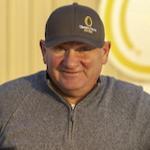
“A free-run system meant more capital cost, more labour and more risk, so the return has to be better to cover that,” Kurt says. “We didn’t have any plans drawn up or anything started until the grading station told us they would give us a premium.”
Once that happened, then the time clock was ticking because, with their current operation still running during the construction phase, there was a very fine timeline that they had to meet to ensure a smooth transition to the new system without interrupting production.
“How the cycle works is that from the day that the pullets have to go into the lay barns, you work backwards,” Kurt says.
Then there were the logistics of keeping the old barns running as the new barns went up.
“We also had to design the new system in a way that we were able to keep the old barn running with the original manure shed, so we had to design some temporary conveyors to take out the manure in the meantime,” Harley says. “Then we had to look at the dates of when we could sell the old barn. The timing of that, and the logistics of having another barn running was a huge hurdle to overcome, but in the end, it actually worked very smooth, for which I’m happy.”
Getting the plans together
There was a lot of preparatory work needed at the farm site before they could proceed, and the two fell into their usual roles: Harley is the technology and numbers guy, while Kurt is all about production, marketing and the financials.
“Before we even started, we had to get all our required permits, and we had to build up the area for the new concrete pads for the barns by close to 10 feet because we are in a flood zone,” Kurt says, who was keeping a keen eye on the budget while Harley started drawing up some preliminary plans. happy to handle the details around the new automated barn systems that they wanted to install.
“Harley and I would come together with a plan, and then we’d talk with the site manager and equipment supplier to put everything together and see what worked for us,” Harley says. “Because it was a fresh build, it was a bit easier to plan, and for years Dad and I had gone to open houses, so we had seen a lot of barns. We always had an idea of what we’d want if we ever built a new barn some day, but now we had the opportunity to do it. That was the fun part; you are kind of dreaming, but yet you make your dream come true.”
Time for a gut check
Then came D-day, or decision day as you might call it. The timeline was creeping along, and the project was about three weeks behind schedule. It was already winter, and the concrete pads had only just been poured when Kurt took Harley and the contractor into the old barn and said that was the day they had to decide if the project would go forward or wait.
“I just told everybody, if you guys want to go, then today is the day we decide if we go forward with this, and I don’t want to see anybody sitting around on a lawn chair. We have got to go hard right until we get the project done,” Kurt says.
After that it was full steam ahead, but the project wasn’t without its challenges, like having to pour concrete in winter.
“It was minus 40 with the wind chill when we poured the floor in the pullet barn and then the concrete pump froze up four or five times,” Harley says. “We couldn’t let the concrete freeze, so we had to have heaters going all the time and in the middle of the night, the heater would stop and I’d have to get it going.”
For two years Harley and Kurt had to keep the pressure on to get the barns completed, and it was exhausting, but finally, in April 2018 they placed the first load of chicks in the new pullet barn. “That was a good day,” Kurt says.
New roles
As they settle into new routines on the operation, there are obviously many overlapping roles, but there are also those that are sharply defined between Kurt and Harley. Each day begins with an 8 a.m. meeting with Mitchell. Each one checks a barn, and they swap barns every other day to make sure no one misses anything that needs attention. While Mitchell gathers, sorts and packages the eggs each day, Harley heads to the office to track the numbers from data being fed in by the computerized control room, run by a system built in Quebec called Maximus. Harley uses data such as egg production rates, feed consumption and conversion and other performance matrices to build and maintain spreadsheets on various platforms, and compares with historical data to ensure the operation is efficient and profitable. He also has spreadsheets that track and schedule the pullets and layers in each cycle for six years ahead.
Meanwhile, Kurt attends to the book-keeping and is the main person responsible for the pullet barn, which is a new side to the operation that they are still learning as they go.
Free-run birds are inherently more difficult to manage because they can move around more freely, which means more potential for issues. But it’s also what makes for a premium end product.
In an aviary free-run system, birds have a free-run floor, perches, scratch pads and roomy nest boxes, and the Siemenses designed some features of their own, like a conveyor system that moves the manure out into storage while keeping it drier, which means there is less corrosion of the steel equipment inside the barn.
The human side of things
Kurt and Harley consider themselves lucky that they have always been able to work well together. Harley says he has always loved tagging along with his dad wherever he went. “We have always gotten along very well since a young age,” he says. “We also share the same risk in the farms, so we want to make sure we do things right to provide for our families.”
Of course, Kurt and Tami are immensely proud of all their children and their accomplishments, but with Harley, he has shared something else: a love of the farm and its operations that has developed into a special relationship over the years.
“I think that kind of relationship, whether it’s as father/son or as business partners, will be strong because of the trust and respect we have for each other,” Kurt says.
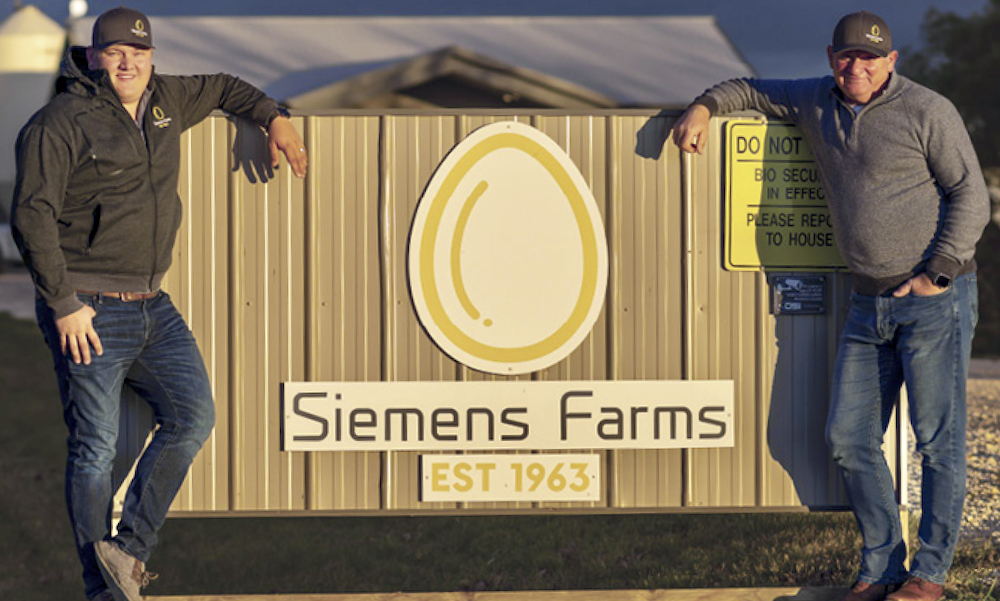
Their strong relationship as father and son has definitely helped them develop into effective business partners with a relationship that is built on a lot of trust.
“As a dad, I try to let others show me how well they can complete a job, and then maybe help with some ideas of how I would have done it, and in the end we both learn what worked best,” Kurt says. “We both make mistakes, and we don’t shy away from letting the other person know that, but we can both learn from those mistakes.”
“I am very appreciative that my dad has let me make big decisions at a young age,” Harley says. “Because he has let me do that, it has allowed me to grow into being a partner with him. We also know where each other’s strengths and weaknesses are, and that helps us on a daily basis.”
The whole evolution of the farm with Kurt and Harley is vastly different to Kurt’s own experience, which may help explain why the two have developed such a good working relationship. Kurt’s dad, Pete, passed away unexpectedly at the age of 55 in January 1983, leaving his mother, Laura, to run the operation. At the time, just a week before his 21st birthday, Kurt was working off the farm in construction, but after a few months Laura wanted to relocate the business, which the family had moved to Sandford, Man., several years prior, back to their home base at Rosenort. By November, Kurt was helping out part-time with the 16,000-bird operation, and soon realized how much he missed the farm, so he returned full-time in 1986, and eventually bought the farm from his mother in 1993. So, although Kurt knew the operation inside out when he took the reins, most of the planning for the future happened afterwards, and that’s taught him and Harley the value of planning and preparing for the next transition, which is why every decision they make is with an eye to the future.
The three new barns have been deliberately built with more capacity than they are currently using, allowing for about another one-third increase in quota if they want to go that way in the future. Kurt is involved in a program through Egg Farmers of Canada called Vision 20/20, which aims to increase egg consumption to 300 per capita annually within 10 years, with the goal of growing the industry to encourage the next generation of egg farmers. Siemens Farms is also part of a research project that will assess its carbon footprint to see how it can be improved, because the environment, says Kurt, is another focus area for the industry.
Of course, they have disagreements, both as father and son, and as business partners, but there is a trust and respect that is built from working together every day, seeing and accepting each other’s strengths and weaknesses as solid blocks to build on, and focusing on common goals that are bigger than both of them.
“We usually have things that we don’t agree on but we both know what causes us to get upset, and which things are better to just let the other person have their way, and let them run with it to show that it was a good decision,” Kurt says. “Serving on many boards has helped me see there are many different ways to achieve things, and to listen to other ideas to come out with the best decision at that time. Harley has picked some of that up, so he understands that a good discussion gets the best results.”
Most of the disagreements, adds Harley, are over small things. “In the big picture,we want the same thing, and that is to be industry-leading and be the best farm that we can be,” he says. “Lots of times, when we disagree, we have discussions and come up with a better solution together.”
Time to take a breather? Are you joking?
Building the barns was the best decision they ever made on the farm, the Siemenses say. It has improved their working conditions and productivity, with fewer cracked and unusable eggs, and a lower mortality rate.
You would think after all that, they would just want to sit back, enjoy running the operation and not have to worry about any new enterprises. Well, that’s not exactly what happened, because just after the project was completed, they were approached about a new joint venture.
A partnership of three families from Quebec and one from Manitoba owned a local egg farm with locations at Niverville and Blumenort, about 30 minutes and 50 minutes, respectively northeast of Siemens farm. Kurt had known one of the Quebec owners for many years and had served with him on the Egg Farmers of Canada board, and when he asked if the Siemenses wanted to buy out the existing Manitoba partners in 2019, it led to some serious discussions around the kitchen table.
“I went home and talked to my wife first, and she thinks I do too much already, so she tends to be my gauge of how much I can do, and she wasn’t too psyched about it,” Kurt says. “Then we talked to Harley, and we liked the idea, but couldn’t wrap our brains around borrowing a whole lot more money to do another farm when we had just finished one. We hadn’t even had a chance to relax after the one was done, so we said no at that point.”
The offer was repeated in spring 2020, and this time they saw it as an opportunity not only to increase operations without having to assume all the ownership, risk and administration themselves, but also as a way to expand upon their existing transition plan for the family that would provide a role for their two, non-farming children.
Their accountant was enthusiastic, and introduced them this time to a different banker, who came out, toured the operation, and decided it was a workable deal they were ready to finance. That’s when Kurt got a touch of cold feet again.
“When the bank came and said we can make that work, that’s when I got really scared,” he says. “I had to get my mind over that.”
Setting up a new transition plan
Kurt and Harley went to look at the two farm sites several times over the next few months before deciding that they would agree to the offer presented to them.
The family established a new company called 4Gen Farms that Harley and Kurt have majority ownership of, but their wives also have shares in. Kurt and Tami’s younger son, who graduated university last year and works off-farm, and their daughter, who is a teacher and farms with her husband on his family’s grain farm, also own shares of the new company.
“It’s a way of transitioning,” Kurt says. “They are still involved in this new company, and if Harley and Brooklyn want to someday own all of 4Gen then he has to buy out his brother, sister and his mom and dad. We have to pay off some debt before we start looking at buying out different shares and things like that, but it’s set up to be able to do that.”
As with all transition plans, there were a few difficult family moments.
“There were some arguments;, there has to be,” Kurt says. “When we drew up the will when we were doing the first succession for Siemens Farms itself, it took us at least four months before we went in and signed it because I wanted to make sure all the kids were comfortable with what was in that will. There was a lot of phone calls, there was some crying and discussions about who’s getting too much, and that’s not fair and all those kinds of things. But that’s a benefit of having 4Gen because we have given them an option of having some shares in that company.”
The partnership also came with the condition that the Siemenses head up a renovation of the two farm sites to upgrade those too to free-run barns — and the whole building process has begun again.
The Siemenses know that without growth, there is no legacy to pass down to the next generation, and Harley and Brooklyn have three very good reasons to remain aggressive about the future of the business; their children, TaNielle (4), Sawyer (2) and Beckett (four months). It’s one of the reasons the new barns have been built with a capacity to expand in coming years.
So, although they may not be collecting eggs from the barn yet, the parents and grandparents of the fourth generation are making sure that if any of them want to farm, the transition will also be as smooth as teamwork can make it.

